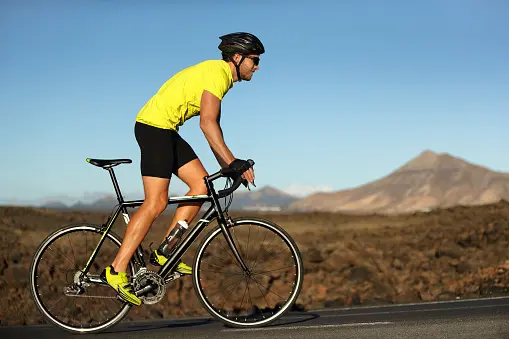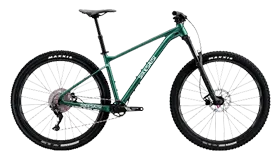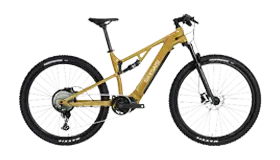Road Bike Riding Tips
Road biking is a great hobby and an even better way to exercise.
Many of my friends may have ridden bicycles frequently when they were young, but riding a road bicycle requires different postures and techniques.
Keeping your body relaxed but well aligned while riding is the most important thing, along with using the lower handlebars your road bike offers and learning to brake early.
Also, find the right bike and saddle, and always wear tight-fitting cycling clothes.

Part 1: Adjusting Posture
1. Raise the seat to about hip level
The saddle of a road bike can be adjusted to suit your height. Stand up straight next to the bike and stay stable.
Raise or lower the saddle so that it is level with your hips. Sit on the saddle and place one leg straight on the pedal.
If you can do that, the saddle is the right height.
When the seat is adjusted correctly, you should be able to extend each leg and pedal without rocking sideways.
2. Before preparing the bicycle, place the pedals horizontally
Before climbing into the saddle, adjust the position of the pedals so they are aligned horizontally. This helps you get more power from the downstroke when you start pedaling.
This is the most useful position when starting a ride, as it allows you to set up smoothly and pedal down.
The pedals can also be placed diagonally from each other as long as they are not in a vertical position.
3. Look forward and raise your head
Your neck shouldn't be tense, but don't lower your head either.
It's important to look ahead for safety reasons, but also to make your neck comfortable, stretch your neck and lower your chin slightly.
Use your peripheral vision to check the sides.
Gently turn your head sometimes so your neck doesn't stiffen.
4. Let your shoulders hang relaxedly
Avoid bending forward when your shoulders are tense. Let them hang and shrug occasionally to release them again.
Learn to tell yourself to relax your shoulders occasionally, because over time you may sometimes tighten your shoulders.
The neck and shoulders are closely connected, so tilt your head to the sides when shrugging to relax the tension in your neck muscles.
5. Bend your elbows while riding
Sometimes you'll be tempted to straighten your elbows, but this puts extra stress on your arm muscles. Keep your elbows close to your body, not out.
Bend elbows also help absorb the impact of bumps that could be injured if you kept your arms straight.
6. Keep your spine slightly curved
Keeping your spine curved helps activate your core muscles to support your upper body.
Lean forward slightly in your seat, making sure not to rest on any bones.
7. Align your knees with your feet
Position yourself forward or backward on the saddle so that there is a vertical line from your knees to the center of the pedal shaft.
If your knees are too far forward, move them back. If your knees are behind your feet, move them forward. Keep your knees directly over your feet.
Part 2: Cycling Techniques
1. When pedaling, move your knees vertically up and down
Resist the urge to bend your knees outward. It makes you pedal less efficiently and puts more stress on your knees.
When riding, push the pedals straight down and pull your knees straight up.
2. Hold the descending pole when going downhill
Road bike handlebars offer three main positions, the lower curved portion is called the drop section.
Holding them transfers more weight to the front wheel, which helps balance the bike when going downhill.
Grabbing them lowers your upper body, creating better aerodynamics.
3. Start braking before entering the corner
You may be riding a road bike at high speeds, but will want to slow down on certain corners. Braking when turning can cause skidding and crashing, so check the speed you are riding before turning, and when the bike is going straight, slow down on the straightaway.
The same point applies here. Start braking early so you don't have to apply the brakes hard when you come to a sudden stop.
Make sure to control each brake evenly so you are not relying more on the other.
4. Drive in the same direction as traffic in the lane
You might think it's best to ride so you can see oncoming traffic, but it's safer to ride with the flow of traffic.
Stay to the right if possible and ride on the curb if the road is smooth enough.
5. Pay attention to your surroundings
It's important to be aware of drivers, other riders and pedestrians while riding.
Check behind you when changing lanes or turning. Be aware of parked cars, road construction or other obstructions.
Seeing what's coming ahead gives you more time to react.
6. Practice shifting gears to maintain momentum
Shift gears while accelerating. As the terrain changes, such as at the bottom of a hill about to go uphill), shift gears.
Remember, the left shifter changes the larger gear via the pedals, and the right shifter changes the smaller gear on the rear wheel.
Part 3: Preparing for the ride
1. Find the right bike size
Bicycles come in different shapes and sizes, just like people. If possible, it's best to work with a cycling professional to find the right bike.
If you want it to be good enough and the handlebars are at the right height, then test ride some bikes and see how it feels while riding.
An ill-fitting bike can cause you to lean forward too much or make your legs feel cramped.
2. Choose a comfortable car seat
People mostly sit on their bikes when riding, so it's important to have a saddle or seat that makes you feel comfortable.
There are different designs for men's and women's saddles, as well as streamlined or wider saddle designs, see what feels best for you.
Budget will influence the saddle you choose. If you want to stick with the saddle that comes with your bike, feel free to do that.
A saddle can supplement a cushion or cushion, as long as it doesn't impede your ability to ride smoothly.
3. Wear cycling clothes that suit you
The clothes you wear can help you ride comfortably and efficiently. It is best to wear cycling clothes to reduce wind friction.
Cycling clothing is also less likely to get caught on chains, making clothing specifically designed for cycling more ideal than casual clothing.
Make sure you choose cycling clothing that fits you well, as you may feel uncomfortable if it's too tight or too loose.
4. Choose the helmet to wear
Since a person's head is most at risk in the event of a collision, it is important to wear a helmet when riding.
Make sure it fits your head shape, has a favorite padding, and looks stylish. When riding, wear a helmet so it fits snugly on your head.
Many helmets can be adjusted in a variety of ways, so choose one that is flexible.
Style doesn't seem to matter to you, so it's best to find a helmet that you feel good in.










